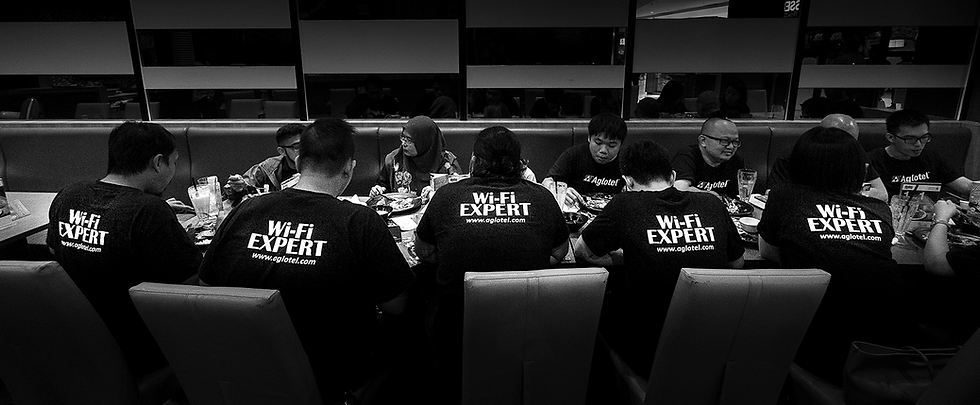

Brainstorming session with meals

Outdoor Wi-Fi
Outdoor Wi-Fi in general are services offered by the following providers:
-
Free public Wi-Fi by municipal councils
-
Government Free Wi-Fi initiatives
-
Extension of Wi-Fi services by Internet Services Providers
-
Mobile operator data offloading facilities for poor cellular coverage
-
Extension of indoor Wi-Fi by hotel and resort operators
Generally, the services are offered free to the public and normally these Wi-Fi facilities are available in public venue environments such as parks, shopping centers, tourist attraction areas, bus and train stations, etc.




With this in mind, the deployment and design for outdoor Wi-Fi are very much different from indoor and building Wi-Fi. Moreover, these are public areas where users are nomadic and mobile in nature. There are not many fixed or repeated users in a free public Wi-Fi environment. In contrast, providers will expect new users connecting to the network all the time as consumers prefer free Wi-Fi networks over their service providers’ data plan especially pre-paid mobile users with limited data plan capacity.
As such, designing outdoor Wi-Fi will require the following conditions to be complied:
Wi-Fi Security and Authentication login
Encryption of Wi-Fi Access Point and Authenticated login servers need to be in place to limit and improve Wi-Fi network security.
Large Coverage Area Needed
Outdoor Wi-Fi users are mainly targeted at cellphone or tablet users. Signal coverage for Wi-Fi Access points needs to have strong Wi-Fi footprint.
Limited Time Usage
To prevent free public Wi-Fi network congestion, providers need to limit the usage time of each user to free the DHCP MAC addresses and to prevent MAC addresses lock-up.
Wi-Fi Access Point Durability
Outdoor Wi-Fi Access Points are subjected to harsh weather environments. IP67 compliance enclosure box is preferred to protect the electronics component against water, dust, heat, and cold. Installation of outdoor Wi-Fi Access Points needs to be carried out by certified professionals.
Interference Mitigation
Installation of outdoor Wi-Fi is mainly carried out in public venues. In this case, there will be co-location with other Access Points. As such, the Access Points need to have interference mitigation features to manage radio frequencies congestions from different Wi-Fi signals.
More importantly, since most outdoor public Wi-Fi services are free to use, operators need to have a sustainable business model to ensure long term availability of these free Wi-Fi services. There are a few successful business models for operators to generate and recoup their Return-on-Investment for the free public Wi-Fi facility:
-
Combination of free and paid Wi-Fi usage with bandwidth capping and time limit
-
Mobile Advertising
-
SSID sharing for mobile data offloading to operators
-
Value-Added Services tie in with the Wi-Fi network (for e.g., video surveillance, etc.)
